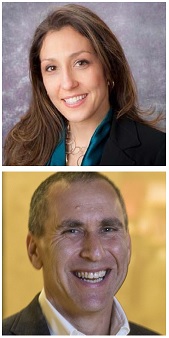
Katherine Malmo recently reported for PT in Motion the importance of physical therapy in the success of future regenerative medicine therapies. As regenerative medicine helps the body restore biological function lost to age, disease, injury, or congenital abnormality, it can be accomplished with the help of medical devices and organs, biomaterials, and cellular therapies. These latter treatment options need support through focused, personalized physical therapy to be successful.
“It’s an exciting time,” says McGowan Institute for Regenerative Medicine faculty member Fabrisia Ambrosio, PT, PhD, MPT, Director of Rehabilitation for UPMC International and an Associate Professor in the Department of Physical Medicine & Rehabilitation at the University of Pittsburgh. “We’re seeing more research and even clinical trials evaluating the potential of stem cell transplantation to promote functional outcomes after stroke. There’s a lot of interest in understanding how rehabilitation—which of course is absolutely fundamental for functional recovery after stroke—can synergize with cellular therapy approaches.”
McGowan Institute affiliated faculty member Michael Boninger, MD, a professor and vice chair for research in the Department of Physical Medicine and Rehabilitation at the University of Pittsburgh School of Medicine, agrees that stem cells need to be trained and programmed through motion. For instance, he says, “If we really want to cure paralysis, we probably need to make sure stem cells understand the electrical signaling they need to do. So, there might need to be a brain-computer interface moving the arm as the person intended to move, so that the right connections are made.”
Dr. Boninger discusses cell therapies, explaining that stem cells need to be trained to become the functional cells that rebuild muscle or tissue.
“For 30 or 40 years, people have been talking about using stem cells or other means of reconnecting a broken spinal cord,” he says. “There has not been much success. One problem may be that the stem cells don’t know what to do when they’re implanted in a nonfunctioning cord.”
However, Dr. Boninger says, if the stem cells are given a “mechanical cue,” they’re much more likely to know how to differentiate themselves and become a functional stem cell that can turn into muscle or tissue.
“If we can decode the signals for movement from the brain and plant stem cells, then move the arm—possibly with an exoskeleton,” he continues, “all of these efforts together might actually create a better environment for the stem cells to work. That’s the regenerative medicine component. The pathways would be recreated by having a better understanding of which signals want to get through, then providing the milieu that enables them to work.”
This is another area in which physical therapy plays an important role.
“The hard work that physical therapists have been pushing people to do keeps being proven important,” Dr. Boninger says. “What physical therapists do has great scientific basis.”
Dr. Ambrosio also has been working to bridge the gap between PTs and rapidly advancing technology and science as co-director of the Alliance for Regenerative Rehabilitation Research and Training (AR3T). AR3T is a National Institutes of Health-funded resource center “supporting the expansion of scientific knowledge, expertise and methodologies across the domains of rehabilitation science and regenerative medicine.” It is a multi-institutional network of laboratories that includes those at the University of Pittsburgh, Stanford University, the Mayo Clinic, and the University of Texas at Austin.
With help from a $5 million grant from the National Institutes of Health, the organization provides funding for what its website calls the “development of novel lines of research” and education through webinars, sabbatical experiences, and research design consultations. Every year, it also hosts the Annual International Symposium on Regenerative Rehabilitation, with the goal of bringing scientists and clinicians together.
“For some time,” Dr. Ambrosio says, “basic scientists have used devices such as bioreactors to apply stimuli to stem cells at the laboratory bench, with the goal of promoting stem cell function. The next logical step is to evaluate how clinically-relevant mechanical, thermal, or electrical stimulation protocols, such as via exercise or modalities, might elicit similar stem cell benefits in vivo. The Symposium on Regenerative Rehabilitation allows basic scientists to gain increased exposure to cutting-edge rehabilitation technologies and approaches. It also exposes rehabilitation clinicians to advances in regenerative biology.
“This is important,” she continues, “because insights into stem cells and their role in tissue healing after injury or in the setting of disease has the potential to help inform the rational design of rehabilitation protocols. Our symposium is intended to be a mashup between the two fields.”
The 8th Annual International Symposium on Regenerative Rehabilitation will be held in Charlottesville, VA, October 24-26, 2019.
Read more…
Abstract (The emerging relationship between regenerative medicine and physical therapeutics. Ambrosio F, Wolf SL, Delitto A, Fitzgerald GK, Badylak SF, Boninger ML, Russell AJ. Physical Therapy; 2010 Dec;90(12):1807-14.)
